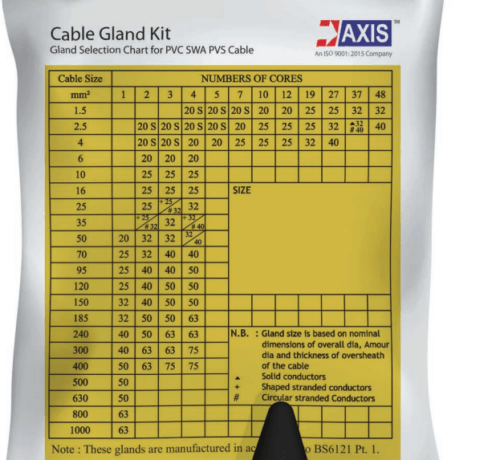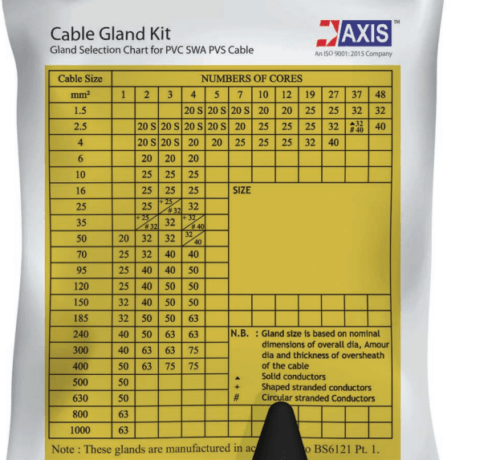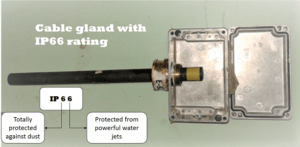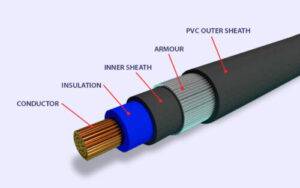Cable glands are designed to fasten and seal the end of an electrical cable to the equipment. They are used as a termination device, and they secure and maintain the characteristics of the enclosure in which the cable enters. Certain types of cable glands also prevent flammable gas entry into equipment enclosures for electrical equipment in hazardous areas. Cable glands are also known as mechanical cable entry devices. Cable glanding is done in many industries such as electrical power, control, instrumentation, data and telecommunication etc. Cable glands are made of various plastics, steel, brass or aluminium for industrial usage.
Before cable gland selection, we need to first identify the requirements of the terminating end. Aso, the standard ratings and protections needed for the connection should be identified.
Steps for Cable Gland Verification:
1) Identify the type of cable, its construction, and its material properties. (armoured or unarmoured, single-stranded or multi-stranded etc.)
If the cable is armoured, verify the following:
a) Identify the type, size and material of the cable armour.
b) Check the short circuit fault current rating of the cable armour.
c) Measure the diameter of the inner bedding.
d) Measure the diameter of the lead covering.
e) Check the actual size of the overall cable diameter.
f) Identify the environmental conditions and requirements like protection against water, dust or gas ingression.
g) While using metal cable glands, consider the material of the mating electrical equipment to eliminate dissimilar metal joints.
h) Consider if any protective plating is required for the cable gland.
i) Identify the type and size of the cable entry hole of the mating electrical equipment.
j) Check the ingress protection rating of the electrical equipment or the site standards.
k) Confirm the cable gland type required for the application (single/double seal, the material used, etc.)
l) Check whether an entry thread seal is required for IP66 (or IP67/IP68) conditions.
m) Identify the other fixing accessories required such as locknuts, earth tags, shrouds etc.
By following the above steps, we can identify the correct cable gland and accessories required for an effective connection.
Gland Selection from Cable Glands Size Chart:
Now let us see how to select a cable gland from the cable glands size chart. We have a standard cable glands size chart as given in the image. The cable gland size is based on the nominal dimensions of overall diameter, armour diameter and the thickness of the over-sheath of the cable.

a) We have the cable glands size chart in the form of a table.
b) The values in the rows show the cable cross-section area (mm²) and those in columns with the number of cores in the cable.
c) Now select the cable size you have from the values in the rows.
d) Then find the number of cores in the cable from the columns indicating them.
e) The corresponding cell or box which coincides with the two above values shows the cable gland size appropriate for the cable.
For example, for a 25mm² cable with 4 cores, we get the cable gland size to be used is 32. The cable gland accommodates the range of cable diameter for which selection of a certain type of cable gland is done from the catalogue or datasheet provided.
Axis cable glands are usually provided with the necessary cable accessories like locknuts, earth tags, shrouds, etc. All our products follow International and National standards. Cable glands that Axis offers are certified by TUV Rhineland Lab complying with the international standard, IEC 62444 and BS 6121. These certifications ensure that the cable glands are efficient and satisfy all the mechanical, electrical and safety requirements.
Thank you for reading the blog, Axis is a leading manufacturer and supplier of Electrical Components to over 80+ Countries. Talk to our industry expert by visiting our contact us section. You can also watch our videos by our experts – click here.








